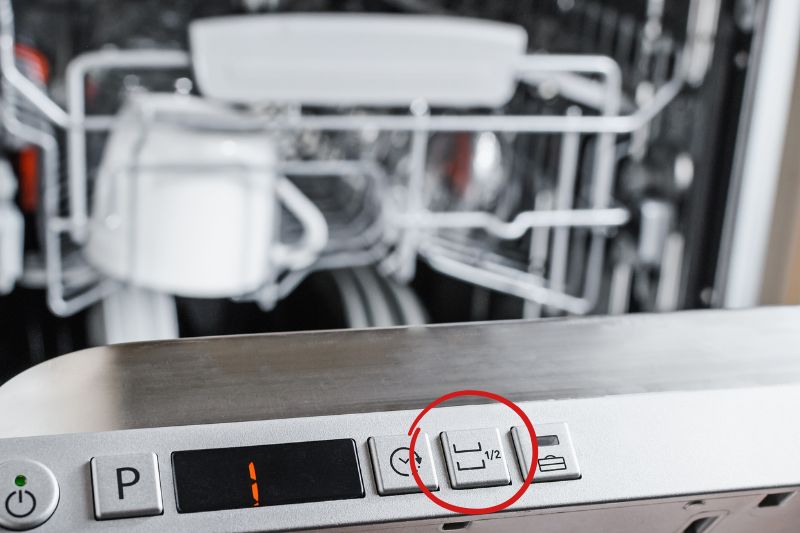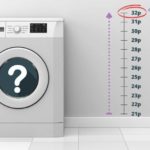Most experts recommend your dishwasher is fully loaded each time you run it, reducing the number of times you need to use it each day and therefore saving energy and money.
For larger households, dirty dishes will stack up quickly and the dishwasher will nearly always be fully loaded. However, smaller households may find it takes a long time to collect enough dirty dishes for a full load, so used plates lie around longer and food becomes stuck onto the dishes.
Also, unless your household has plenty of extra plates and utensils, you can soon find yourself running out of the clean items that you may need.
Many dishwashers now come with a half load programme, which may be the solution for smaller households, but is this option any good?
How Does the Half Load Function Work?
Nearly all modern dishwashers have a top basket and a bottom basket for loading dirty dishes. The dishes in each basket area are sprayed by water jets from a pump during a normal wash cycle and controlled by valves.
During a half load cycle, a diverter valve prevents the flow to the jets in either the top or bottom half of the dishwasher, only cleaning the dishes in one area of the machine (this varies between the top or bottom baskets in different models).

Does the Half Load Function Save Money?
The half load function on a dishwasher does use less water compared to a regular cycle, as water is only spraying one half the appliance.
This may save some money, particularly for those with a water meter installed.
However, the half load option certainly doesn’t use half the amount of water or energy of a full cycle. Which? magazine states that it can still use 90% of the water and energy as a regular cycle.
You may also be able to save a little money on detergent when washing a half load of dishes. However, this isn’t the case if you usually use dishwasher tablets as you’ll still need a full tablet for a half load wash cycle.
Running a dishwasher on full load is probably still the most economical option, even if you need to buy a few extra plates and mugs so you don’t run out whilst waiting for a full load to wash.
How Well Does a Half Load Clean Dishes?
In tests, the half load option on many machines doesn’t always clean dishes as effectively as a full load. However, this may of course vary between different makes and models of dishwashers.
Dishes may also be more prone to breaking in a partial load, as dishes bang into each other with more force when hit by the jets of water.
Is It Worth Buying a Dishwasher with a Half Load Option?
The half load option on a dishwasher won’t necessarily save you much money, even if you have a small household, and it doesn’t always clean dishes as effectively as a standard programme. So, is it ever worth buying a dishwasher with a half load option?
There are certain makes and models of dishwashers that have a much more effective half load option than others, for example appliances made by Bosch and Zanussi.
However, it’s worth remembering that the diverter valve used during a half load is one more part that might break on an appliance and may be expensive to be replaced.
Also, for many smaller households it may be worth buying a smaller, slim-line appliance that holds fewer place settings rather than looking for machine with a half load option.
If you are thinking of buying a new dishwasher, a half load setting is something that you may find useful on odd occasions. However, the presence of a half load option probably shouldn’t be the main factor when choosing a new dishwasher, even for smaller households.

In The Wash is your guide to the best laundry and cleaning products, tips and tricks. Our mission is to solve the UK’s cleaning and laundry dilemmas!






